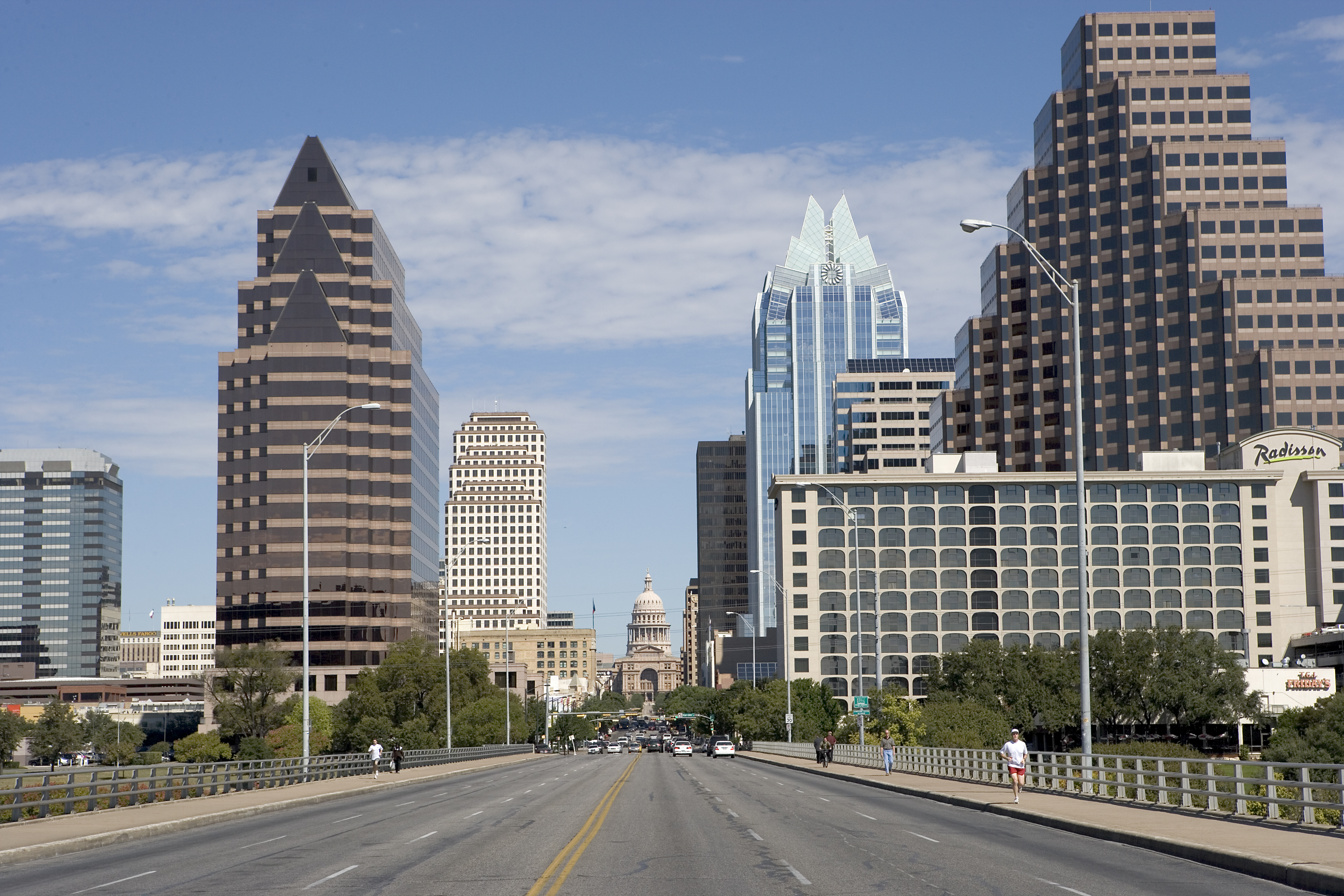
By Cyrus Reed
On October 15, 2015, Austin City Council approved a plan, on an 8-2-1 vote, to contract up to 450 MW of solar power by 2017, and directed Austin Energy to obtain an additional 150 MW by 2019, to be contracted or owned. Along with a 2014 purchase of 150 MW of solar, Austin is expected to have 750 MW of solar power on the ground by the end of 2019 (assuming all contracts are signed and solar plants are completed). This is a huge commitment and investment that would make Austin one of the top “solar” cities in the country. But how did Austin get to this point?
Now that the council votes have been made and contracts are being signed, it is worth remembering the key role played by multiple organizations, by the Austin City Council, and by Austin Energy. While different organizations took different approaches, in the end, this is a shared community vision that should be celebrated as a groundbreaking achievement.
Austin’s first large-scale solar contract
The first foray into large-scale solar was the decision to build the 30 MW Webberville solar plant on the outskirts of Austin. It was the largest in Texas at the time and was supported by the environmental community, Austin Energy, and City Council. While the reported price was very high compared to more recent solar projects – somewhere around $150 per MWh – the opportunity to learn about solar, get energy locally within Austin’s load zone, and provide energy at peak – outweighed the high cost. In addition, when the decision was made, natural gas and ERCOT prices were considerably higher than they are today.
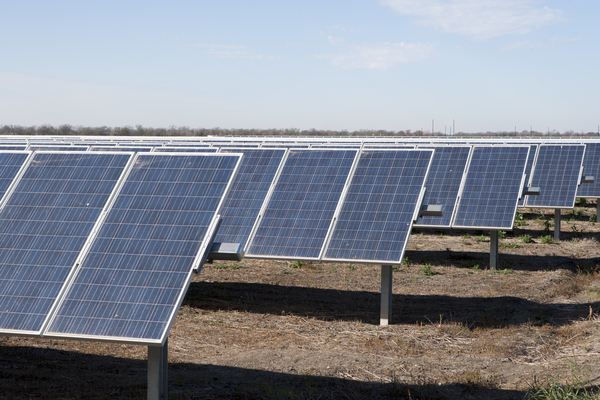
Photo: The 30 MW Webberville solar plant. (albradenphoto.com)
The 2020 Generation Plan: 200 MW of solar goal
In 2009, then Mayor Lee Leffingwell called for a special Generation Resource Planning Task Force to review Austin Energy’s long-term energy resource plans. The original nine member Austin Energy Generation Resource Planning Task Force was named and included several environmental representatives including Cyrus Reed with the Sierra Club and Matt Johnson with Public Citizen’s Texas Office (who now handles communications for the Lone Star Chapter). Over a six-month period, the task force met in collaboration with Austin Energy and reviewed renewable energy, energy efficiency, and climate protection goals. They also analyzed assumptions on the natural gas market, coal, and nuclear options.
In 2010, on a 9-0 vote, the Austin City Council approved expanded renewable energy, energy efficiency, carbon reduction goals, and a requirement that any major generation or purchasing decision be sent to the relevant committees – The Electric Utility Commission (EUC) and Resource Management Commission (RMC). This was followed by an “affordability” metric added in April 2011.
Among the important 2020 goals adopted by City Council included:
- 35% renewable energy
- At least 200 MW of solar power, including 100 MW of power from large-scale (non-local) solar
- 800 MW of demand reduction through energy efficiency and demand-side management between 2007 and 2020
- Assessing the potential for reducing and eliminating Austin’s need for the Fayette coal-fired power plant through a future study.
Local solar goal
An additional effort was made in 2013 through the Local Solar Initiative, which sought to assess whether the local solar goal of 100 MW by 2020 was reasonable. A working group was established and a report was issued. The report laid out an aggressive scenario, a moderate scenario, and a lower scenario. The group supported the moderate scenario, which advocated raising the local solar goal from 100 MW to 200 MW, with at least 100 MW being customer-sited (as opposed to large-scale utility-owned or community solar). City Council endorsed this approach, but suggested that it be addressed in a future generation plan.
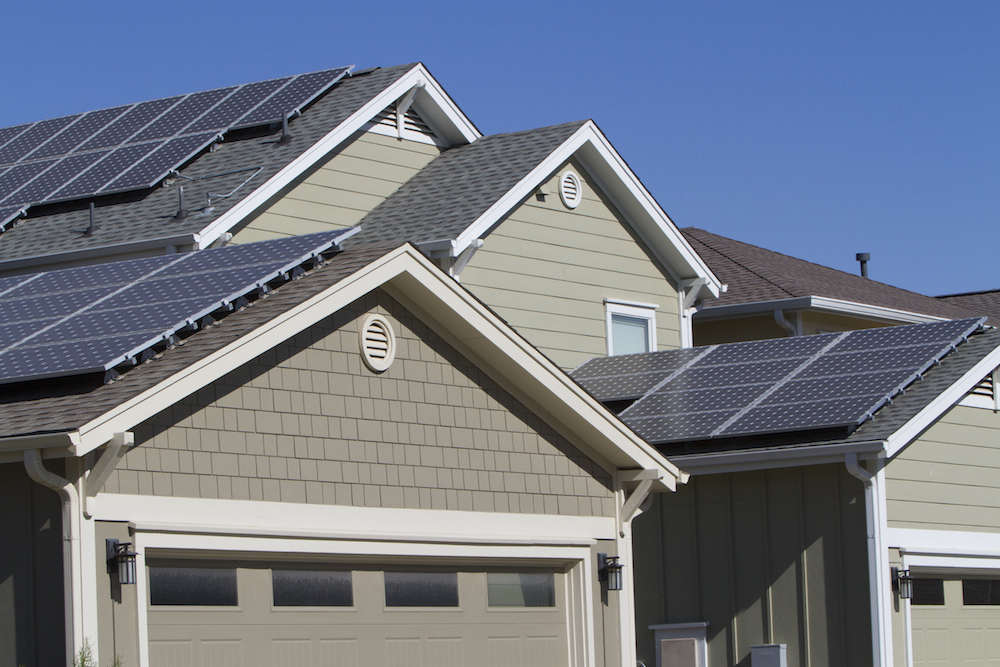
Photo: Solar rooftops in Austin. (albradenphoto.com)
The second solar contract
After Austin Energy General Manager Roger Duncan retired, Austin Energy’s new leadership issued an RFP for 50 MW of solar in 2014, leading to surprising results. While they were planning for only 50 MW, the prices were so good, they recommended getting 150 MW. While the contract with the original company did not work out, eventually, the decision by Austin Energy – supported by the EUC and RMC – and by City Council, led to Austin Energy executing a solar contract in place that met virtually all of the 200 MW 2020 goal. The 150 MW Recurrent Energy solar project, located in Pecos County, is expected to cost roughly $50/MWh and become operational in April 2016.
A step back
In late 2013, we were knocked back on our heels by presentations claiming that getting off of coal would cost Austin more than half a billion dollars and that Austin Energy was interested in raising our reliance on new natural gas by 1,000 MW. In fact, Austin Energy was advocating selling our share of our coal plant and buying or building a large natural gas plant.
In February 2014, a community of advocates organized support for clean energy and moving beyond fossil fuels as Austin Energy launched a public campaign to begin the process of updating their 2020 Generation Plan. However, the utility publicly stated they were not considering major changes to the specific goals of 35% renewable energy and 800 MW of energy efficiency.
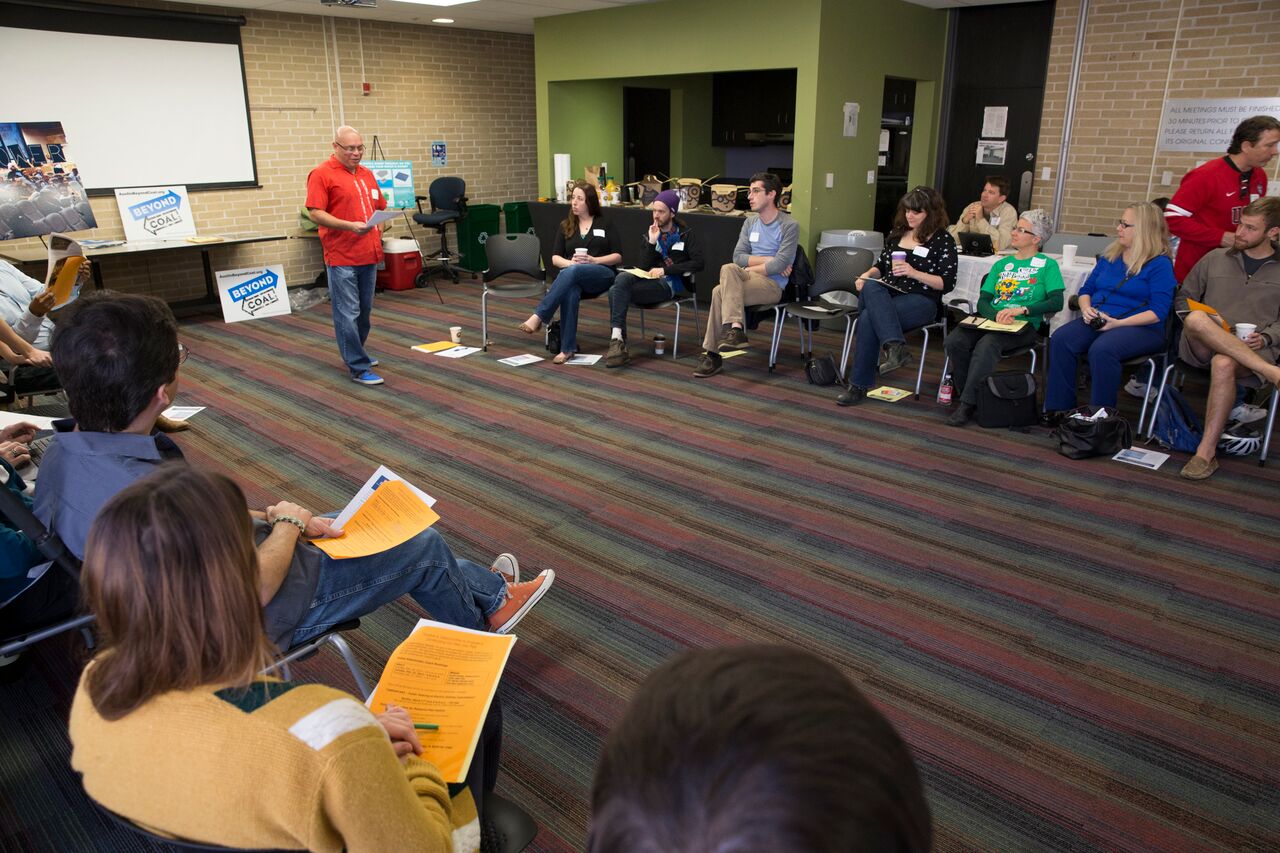
Photo: Austin stakeholder meeting, 2014. (albradenphoto.com)
Generation Planning 2.0: The 2025 Austin Energy Generation Resource & Climate Protection Plan
In March 2014, Austin City Council approved a resolution to put together a new Generation Resource Planning Task Force. The idea emerges from frustration with the Austin Energy planning process, which did not appear to consider more aggressive approaches to reducing fossil fuel use and increasing renewable energy use, energy efficiency, and new resources like demand response and energy storage.
The Generation Planning Task Force met from April to July 2014. Led by former Austin Energy executive Michael Osborne, the Task Force included Sierra Club’s Cyrus Reed and Public Citizen’s Tom “Smitty” Smith, and the following additional members:
- Barry Dreyling, Vice Chair (CCARE and Spansion)
- Clay Butler (The Butler Firm)
- Carol Biedrzycki (Texas ROSE)
- Grace Hsieh (CLEAResult)
- Mike Sloan (Virtus Energy)
- Michele Van Hyfte (Seton Healthcare)
The Task Force issued its final report in July 2014. While it did not adopt an actual generation plan, it suggested a series of goals, including:
- Issuing an RFP for an additional 600 MW of solar as soon as possible, with the goal of contracting another 600 MW of solar by 2017, if available and affordable, as a means to replace the output of the aging and expensive Decker Natural Gas Steam plant
- Setting a local solar goal of 200 MW by 2020
- Setting a goal of 200 MW of energy storage by 2025
- Expanding the energy efficiency and demand response goal to 1,200 MW by 2025
- Considering equity in the design and implementation of solar and energy efficiency goals
In a largely negative response, Austin Energy officials said the goals of increasing renewables and solar so much, in addition to energy storage and energy efficiency, could cost upwards of $3 billion, and expressed concerns about meeting these proposed goals and measures affordably and reliably.
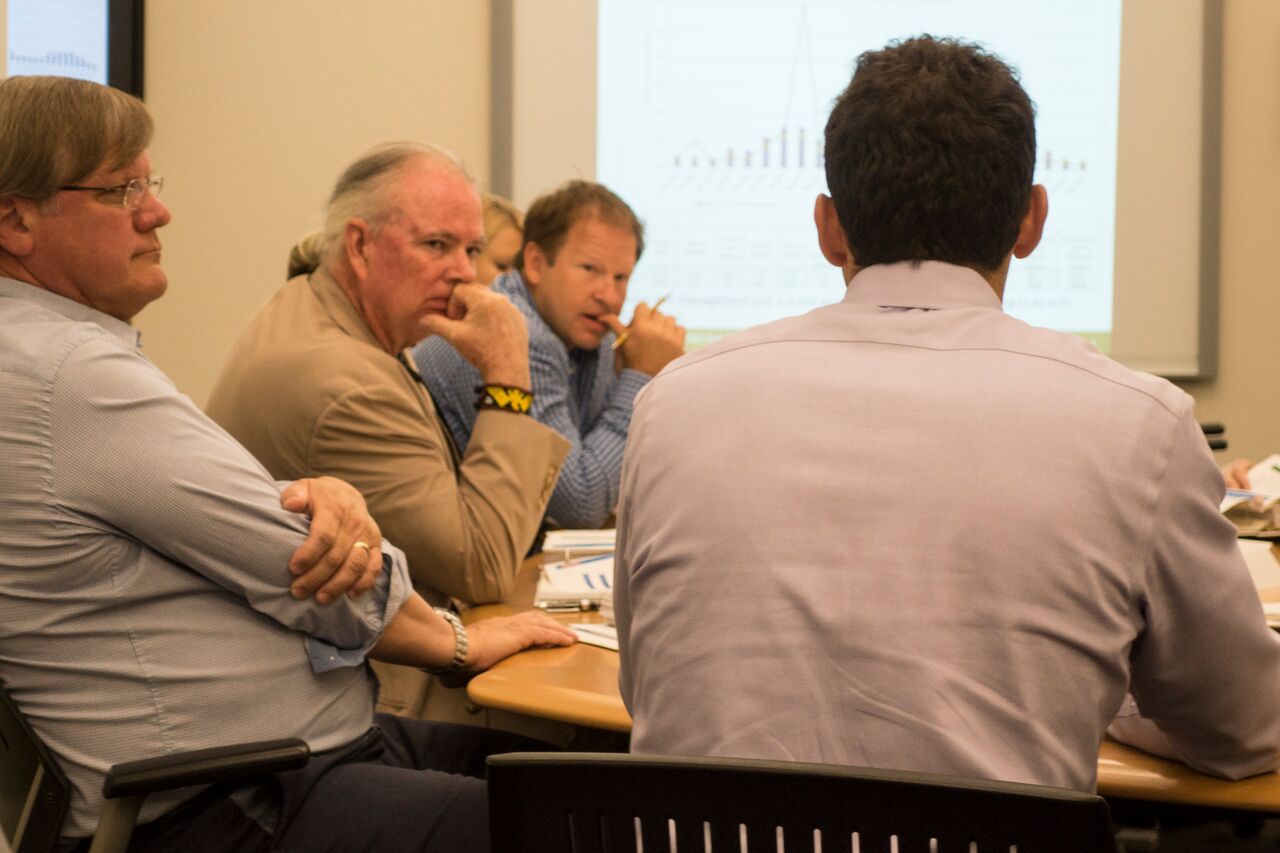
Photo: Austin Generation Planning Task Force meeting, 2014. (albradenphoto.com)
Resolutions 157 and 158
After an outpouring of community support and despite clear opposition from Austin Energy and the business community, on a late night in August 2014, Austin City Council took much of the work of the Generation Planning Task Force and approved as policy large goals – if affordable – to:
- Meet the solar goal of an additional 600 MW by 2017;
- Create an energy storage goal of 200 MW by 2025;
- Meet a goal of 65% renewable energy by 2025;
- Attempt to get to a zero carbon output by 2030;
- Meet a goal of 200 MW of local solar by 2020, including 100 MW of customer-sited solar;
- Create a process to establish further energy efficiency goals, including specific goals for low-income and low-to-moderate income residential consumers
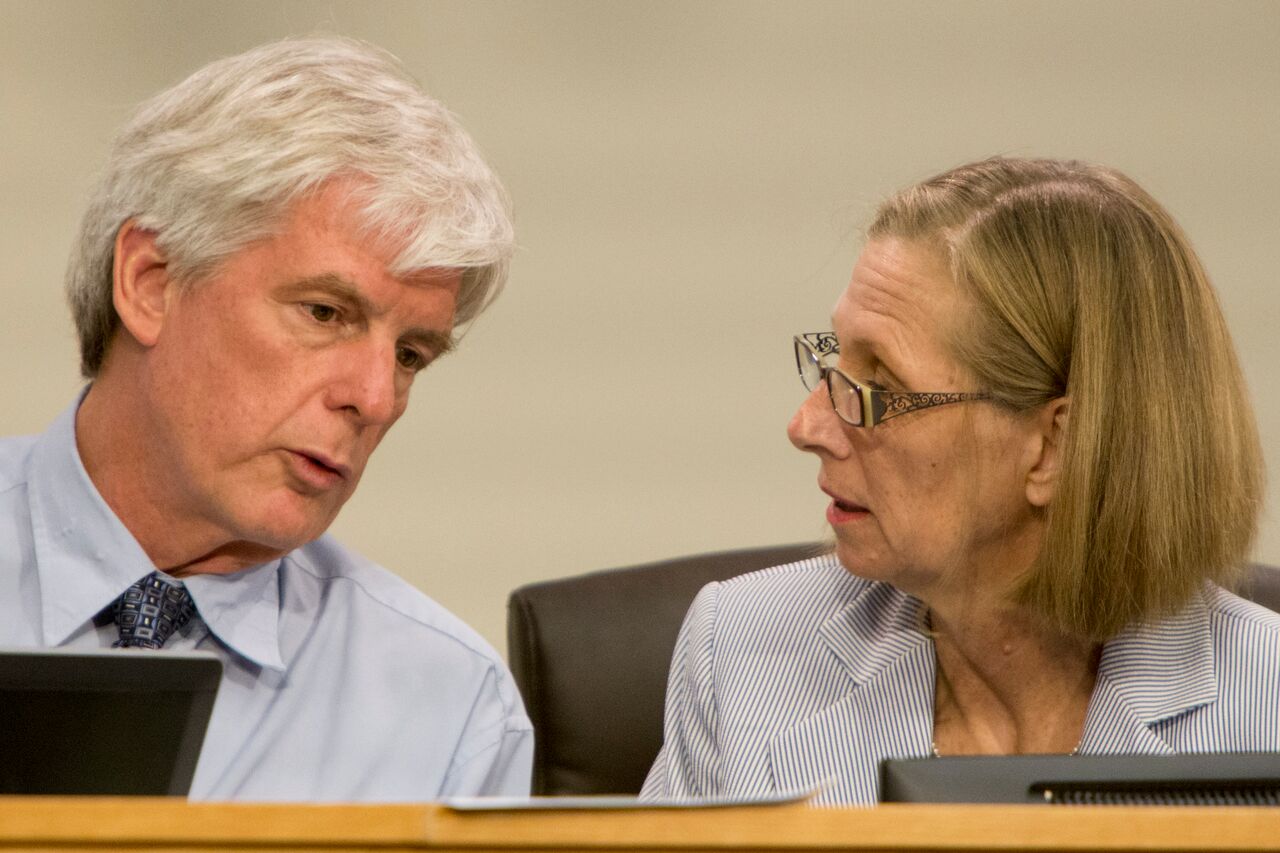
Photo: Austin City Council members Bill Spelman and Laura Morrison, 2014. (albradenphoto.com)
The 2025 Generation Resource Plan
Following the approval of Resolutions 157 and 158, Austin Energy continued to express concern that the goals might be unaffordable and difficult to achieve. They proposed a new resource plan that they called the 500+ Plan, which called for a new 500 MW combined-cycle natural gas plant, a 50% by 2025 goal for renewable energy, continuing to meet the 800 MW energy efficiency goal from the 2020 Generation Plan, closing the Decker natural gas plant, and a general ramp down of the Fayette coal-fired power plant by 2025. Neither 157/158 nor Austin Energy’s plans met the criteria the Sierra Club team wanted in a long-term energy plan, with affordability and fast retirement of our oldest fossil fuel units as high priorities.
The release of Austin Energy’s proposed 500+ Plan led to a series of stakeholder meetings, with Sierra Club taking a lead role working with Austin Energy and City Council leaders such as former Councilmembers Mike Martinez, Chris Riley, and Bill Spelman. Those meetings led to a compromise: a new generation plan that subjected Austin Energy’s aspirations for a new natural gas plant to an independent study. (Click here for more detailed background on the adoption of the current 2025 Generation Plan).
Among the highlights of the historic agreement that City Council approved on an 8-1 vote on December 11, 2015 were:
- A commitment to 750 MW of large-scale solar by 2025, but with a requirement that an RFP be issued for up to 600 MW of solar in 2015, and be contracted by 2017 if available and affordable
- A commitment to 200 MW of local solar, but with added flexibility to meet the goal by 2025
- Achieving 55% of renewable energy by 2025, with a study to look at getting to 65%
- Achieving 30 MW of local energy and thermal storage in Austin Energy’s distribution network, and issuing an RFI to look at 170 MWsof large-scale energy storage
- Committing to a phase down of the Fayette coal-fired power plant beginning in 2022, with potentially being off of coal by 2023
- Increasing the demand-side management goal to 900 MW by 2025, a further goal to get to 1,000 MW of by 2025 if budgets and technologies allow, while assessing the potential to get to 1,200 MW
- An independent third-party study of a 500 MW combined-cycle natural gas power plant, as well as alternatives to that power plant as Austin Energy committed to the retirement or phase down of Fayette and the Decker
While the 2025 Generation Plan was generally praised for its renewable energy – particularly solar energy, and energy efficiency goals, as well as having a plan to retire Decker and Fayette, the concept of generating revenues and closing down existing fossil fuels by building a new natural gas plant was criticized by many organizations. Sierra Club took the position that the purpose of the independent study was to verify the approach and see if there were viable alternatives to shut down Austin’s portion of Fayette and Decker without needing additional natural gas.
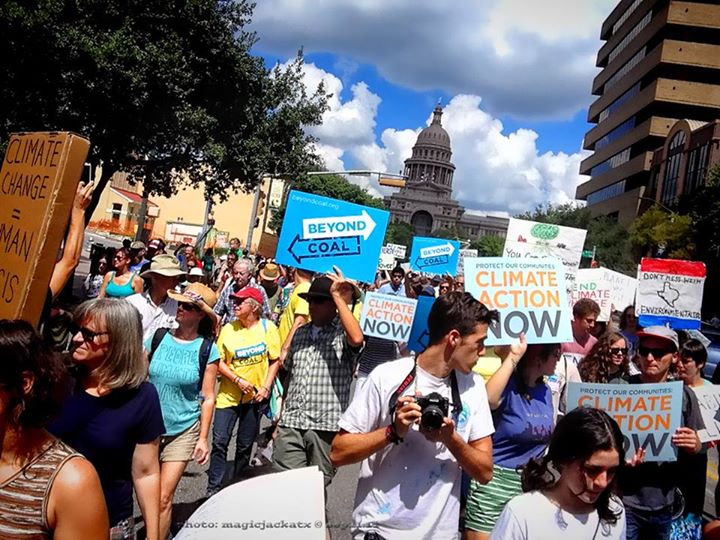
Photo: People's Climate March, Austin. (Austin Beyond Coal)
Next Steps: Solar RFP
Following the approval of the 2025 Generation Plan, with its ambitious renewable goals, many organizations immediately began to target the first two steps outlined in the plan: an RFP for up to 600 MW of new solar energy and the independent assessment of the proposed natural gas plant and its alternatives. The independent assessment being conducted by Navigant is currently being reviewed by the EUC, but is not yet complete.
Spearheaded by the Solar Si, Gas No Coalition – with support from the Sierra Club – Austin City Council passed a resolution calling on Austin Energy to issue the 600 MW solar RFP in April 2015, with results due by the end of May 2015. The results were an outstanding success, with projects totaling more than 8,000 MW, more than 1,200 MW of which were at prices even lower than the 150 MW Recurrent Energy deal.
Based upon these results, the EUC – a citizen advisory committee which included both Michael Osborne and Karen Hadden, who heads the SEED Coalition, began considering a recommendation to Austin City Council to contract the best 600 MW of solar power available. Naming a subcommittee to look more closely at some of the prices and assumptions, the committee recommended that City Council direct Austin Energy to put forward a plan to contract all 600 MW of additional solar power by 2017, if available and affordable.
It is important to note that the subcommittee and the EUC itself relied to a degree on a white paper released by the Sierra Club that looked a various options of how to get to 600 MW. Generally, the white paper found that if Austin Energy could get prices in the range of $38/MWh, Austin ratepayers should be able to enjoy the solar power for less than a 1 percent impact in the short-term and actually save money in the long-term. The paper also discussed a hybrid approach of getting 400 MW now and reserving 200 MW for later ownership.
Austin Energy chose to present their plan in two phases. First, their staff recommendation laid out getting an additional 288 MW of solar from two contracts with leading solar companies (whom we now know are First Solar and Hanwha Q Cells). They emphasized in their presentation to City Council that the proposed contracts could be obtained for under $40/MWh, and that the expected rate on bills would be less than half of one percent of the Power Supply Adjustment – essentially fuel costs – for most customer classes. In fact, Austin Energy said they expected that within five years after the plants were operational the solar contracts would actually help save ratepayers money since they expected wholesale rates to go up within a few years, meaning at less than $40/MWh the solar contracts would reduce prices on Austin Energy customers.
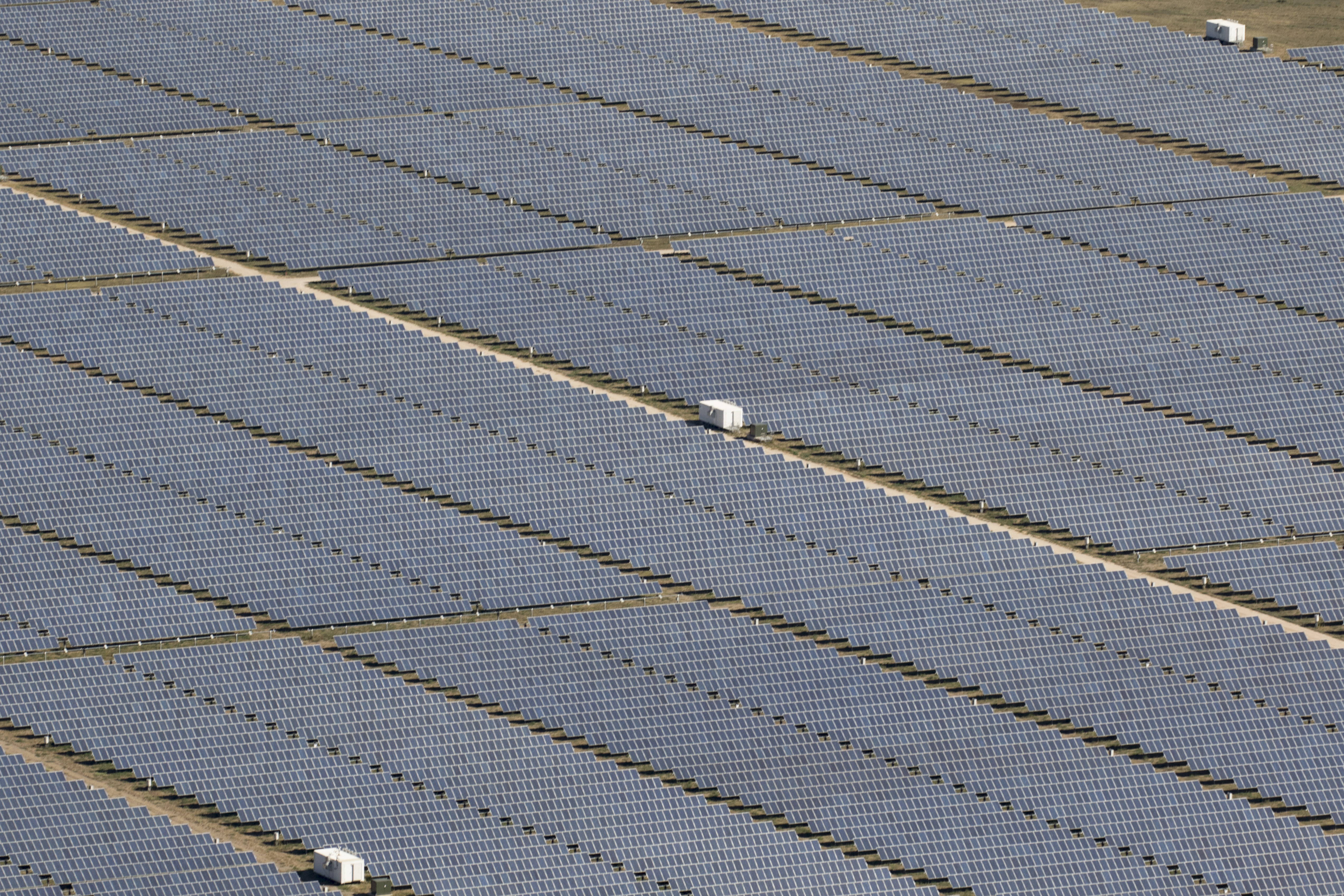
Photo: Large-scale solar power plant. (albradenphoto.com)
A second set of contracts was also presented to City Council on September 29, and October 1. This set – for up to an additional 350 MW of solar – was not recommended by Austin Energy, who argued that both the location of the projects and their prices were less favorable than the first set of contracts. Even so, their analysis showed only a 1-2 percent potential impact on the PSA even if all 600 MW of solar were contracted.
The first set of contracts for 288 MW was approved by the RMC and EUC, and on October 1 went to City Council for consideration, along with the additional contracts for up to 350 MW of solar. Sierra Club took a position of supporting the first set of contracts – endorsed by virtually all stakeholders – but asked that the second set of contracts be sent to the RMC and EUC for further review, since the exact contracts had not been reviewed by either advisory committee. The Sierra Club noted that those bodies might recommend all the solar be contracted, none of it, or some portion of those contracts with the best terms and prices. If none of the 600 MW were contracted, the Sierra Club suggested that to meet the overall 750 MW goal, City Council could direct Austin Energy to pursue additional solar as soon as 2017, at which time there might be tax advantages to Austin Energy owning large-scale solar rather than contracting for it. A copy of our recommendations can be found here.
On October 1, City Council essentially took a similar approach, approving the first 288 MW and sending the second batch of contracts back to the commissions for further analysis. All stakeholders noted the historic nature of this large solar purchase, the largest in the history of the Electric Reliability Council of Texas (ERCOT), and more than twice the amount of solar that was currently operating on the grid at the time.
The second batch of solar
On October 12, the RMC and EUC met jointly and carefully reviewed the second batch of solar contracts. Both bodies recommended additional purchases, though their exact recommendations differed slightly.
The EUC looked at the best available prices available and recommended adding 250 MW of solar based on the best available prices. The RMC also recommended additional solar contracts, but rather than going with a specific megawatt number, recommended adding as much solar as possible up to an expected rate impact of 1 percent on any rate class, and then coming up with a plan for the rest in 2017. Under the 1 percent cap, analysis showed that about an additional 162 MW could be contracted, with the rest to be part of a plan in 2017.
Over the next few days, stakeholders offered their perspectives to City Council on what the best approach to get additional solar was. While some – notably the business community and Austin Energy itself – argued that it was less risky to delay additional solar resources until after 2017 given the potential short-term impacts on residential and especially large industrial bills, the Sierra Club argued for the hybrid approach, getting 450 MW now (288 MW in the first set of proposals and 162 MW in the second set), and directing Austin Energy to come back with a plan in 2017 for the rest. Joining Sierra Club in arguing for the hybrid approach was Environment Texas. It is important to note that the Sierra Club did not oppose going to 250 MW with the second set of proposals, but expressed support for the RMC approach of creating an expected bill impact cap of one percent.
Other groups – like Public Citizen, the SEED Coalition, Climate Buddies, Clean Water Action, and individuals including EUC chair Michael Osborne and many long-time solar activists – argued that we should at least get an additional 250 MW to get close to 550 MW since the prices were so historically low. With tax incentives being phased out after 2016, they argued that it would be best to lock in the great prices now.
The historic vote on October 15 was indeed a compromise of both positions. Following about 30 minutes of input from citizens and organizations, Councilmembers Delia Garza and Leslie Pool endorsed the EUC approach, and recommended getting an additional 250 MW of solar. Mayor Steve Adler then responded with his own proposal – getting to a maximum of 450 MW of solar as long as the total expected impact did not exceed 1 percent – and putting in place a process to contract or own the additional 150 MW of the 600 MW goal by the end of 2018. His motion was seconded by Councilmember Greg Casar.
In making his motion, Mayor Adler delivered an impressive speech on the reasons for his proposed compromise, and the difficulty for Council when so many different groups and stakeholders offer different facts and “truths” in supporting their position. He said he felt his compromise was a good one, and would ensure little to no long-term impact on bills, while leaving open the potential for solar ownership in the future, which might yield additional benefits.
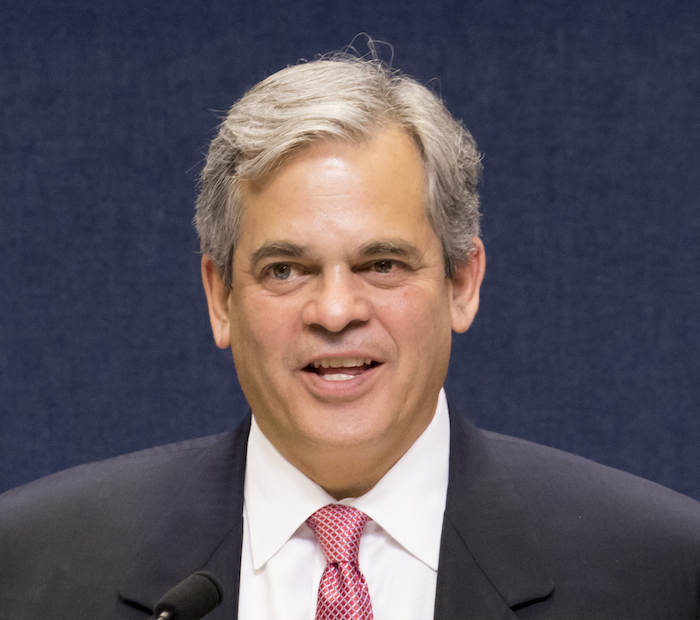
Photo: Austin Mayor Steve Adler, 2015. (albradenphoto.com)
After a lunch break in which City Council received additional input from stakeholders– including both the Sierra Club and Public Citizen – an even stronger resolution was adopted, again led by Mayor Adler. In addition to the 450 MW of solar up to the 1 percent of cap, Austin Energy should not only begin the process of securing the additional 150 MW, they should have it operational by 2019. The final resolution made by the Mayor was then endorsed by eight of the 11 members of the Austin City Council, with one member abstaining, and the two most conservative members voting against the proposal.
Thus, from the Sierra Club’s perspective, the final resolution was a victory for all parties – environmental advocates, solar advocates, ratepayers, et al – and was the result of important work done by advocates, environmental organizations, Austin Energy, Austin City Council, and the hard-working members of the EUC and RMC. While advocates and organizations did take slightly different positions during the course of the debate over going big on solar, the result is extraordinary: 600 MW of solar contracted by Austin Energy on the ground by the end of 2016, with another 150 MW of solar on the ground by the end of 2019.
Cyrus Reed is Conservation Director of the Sierra Club's Lone Star Chapter.
Top photo: Austin skyline (albradenphoto.com)